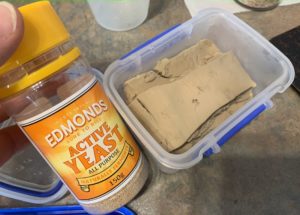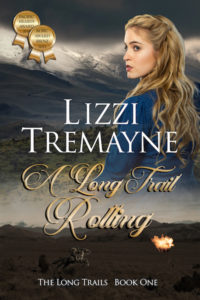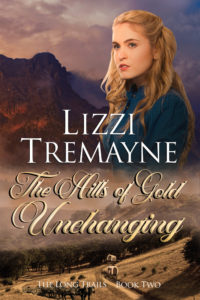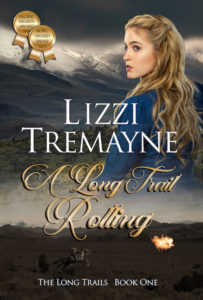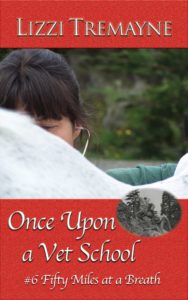

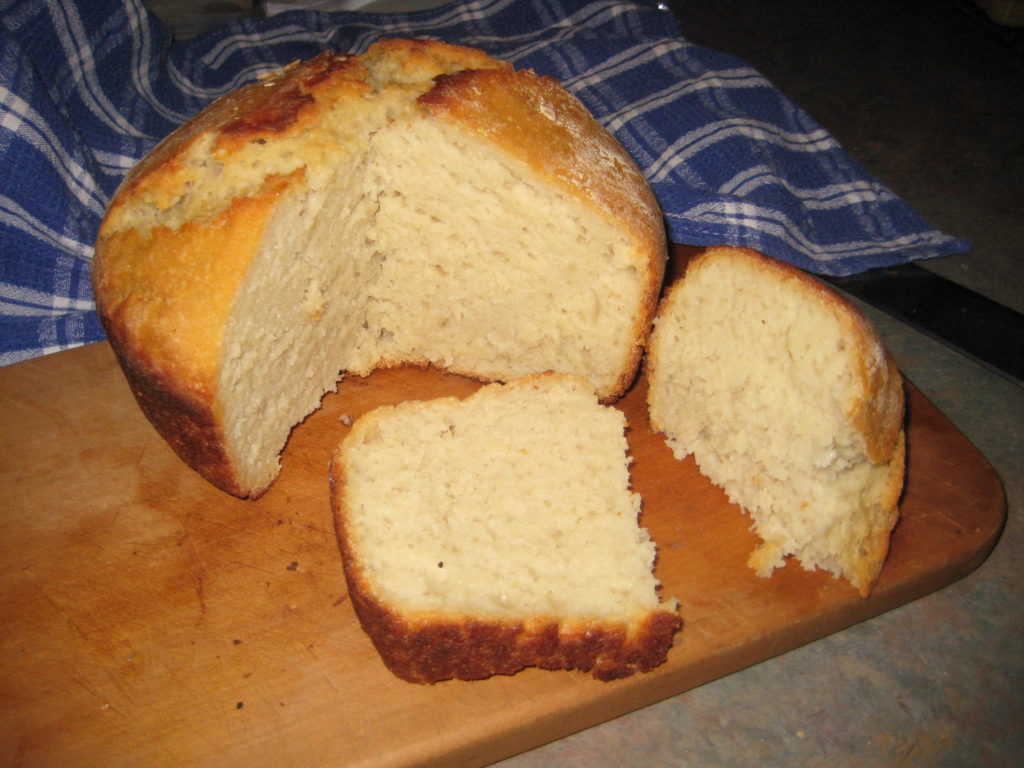
Covid Home Sanity: Issue #3: No Yeast? Make REWENA BREAD!
Contents
Rewena Bread, Traditional Māori Bread!
Most of you know me as a writer, but I’m also an equine (horse) veterinarian and teacher. With the onset of COVID-19 home isolation or quarantine, or School Time Out, I wanted to use what I’ve learned through my life to help as many of you as possible to enjoy the extra time you get to spend with your families. And your kitchen!
Yeast has been in short supply lately around here, so this seemed the best time to put this recipe out!
This is my adaptation of a traditional recipe. In case you don’t know, all of my novels contain recipes and this one is featured in my third novel, A Sea of Green Unfolding. While I say traditional, it is only traditional since introduction of flour by Europeans, but it’s been a favourite in NZ since then!
xx
Lizz
How to Make Rewena Bread:
First you will need to make a starter bug. Plan to make this Hua Rēwana (starter bug) about a week before the time you want to make the Rewena:
Ingredients:
- 2 cup parāoa (flour)
- 4 tablespoons huka (sugar)
- 2 cooked rīwai / rewa (potato) or kumara (sweet potato)
Instructions:
Cut up and boil potatoes or kumara. Save water and mash by hand in cooled potato water.
Mix all ingredients together and put into a sterilized jar. Cover. Let it grow in a warm place. (Not a heating pad, too hot).
Feed it every day for at least seven days with:
- 1/2 cup flour
- 1 tsp sugar and
- enough water to mix it all in. Lumpy is fine.
- After a week, go ahead and make your Rewena Bread!
To improve bug for rising, at least once per week, mix into rēwana:
- 1 cup flour
- 1/2 cup sugar and boiled warm (not hot) potato water.
- If your water is chlorinated, boil it first, so the chlorine doesn’t kill the bug.

Rewena Bread
Ingredients:
- 4 cups high grade parāoa (flour)
- 2 tablespoons huka (sugar)
- 2 cups wai (water)
- 2 cups hua rēwana (starter bug)
Mix the flour and sugar, then make a well in the dry ingredients.
Add the bug and the water, then combine all ingredients.
Do not beat it. 🙂 Knead gently ONLY until mixture loses its stickiness (maybe five minutes?)
Place in greased dutch oven. Cover with cloth and leave to rise in warm place until doubled in size.
Heat oven to 425 degrees F(F) / 235 degrees C (C). Bake 10-12 minutes, then turn oven down to 360 F / 200 C for 10-12 minutes, then cook at 338 F / 187 C for about an hour.
Enjoy with butter, honey, jam, whatever!
THE SCIENCE BEHIND BREAD MAKING
You thought you were going to get off easy after yesterday’s chemical reactions, eh?
Not so fast, bucko!
To those of you missing out on school, here’s a bit of biology and chemistry at once, and you get to eat the results (Apologies if you’re GF, but if you can be patient, I’ll be posting a recipe just for you soon!). Doesn’t get any better than that!
Okay:
In its most basic form, flour is made up mostly of carbohydrates, which are multiple sugar units stuck together. Different types of sugar have different structures, but I won’t torture you with that today. Anyway, in the absence of oxygen (reactions in the absence of oxygen are called anaerobic reactions, an=not) live yeast organisms breaks down the carbohydrate structures of your flour and other added sugars to alcohol and carbon dioxide in a process called fermentation. Remember carbon dioxide? that’s CO2 to you guys, from yesterday’s post about volcanos? The alcohol evaporates in the oven, forming its own gas bubbles, further contributing to bread rise.
Here are some questions to answer below:
1- What do you think all that CO2 and alcohol that’s generated by the yeast will do to your bread dough?
2- What did CO2 do to your liquid in the volcano?
3- If we used a flour that was more complex, or larger-grained, how do you think that would affect the rising of your bread? Hint: whole grains are harder to break down… how would this affect rates of reaction?
4- If you use larger chunks of grain (vs finely ground grain), how are rates of reaction to create CO2 affected and why does this happen? This is a NZ Level 2 question… you’ll see this again, might as well learn it now! 🙂
I found two very cool websites that go into these topics and how they affect the bread you make:
Remember to post piccies of your bread or of your family or bubble-mates making it! PLEASE???
PLEASE SHARE, ALL! THE MORE PEOPLE WE KEEP FROM GOING STIR-CRAZY BY LEARNING NEW SKILLS TOGETHER, THE BETTER!
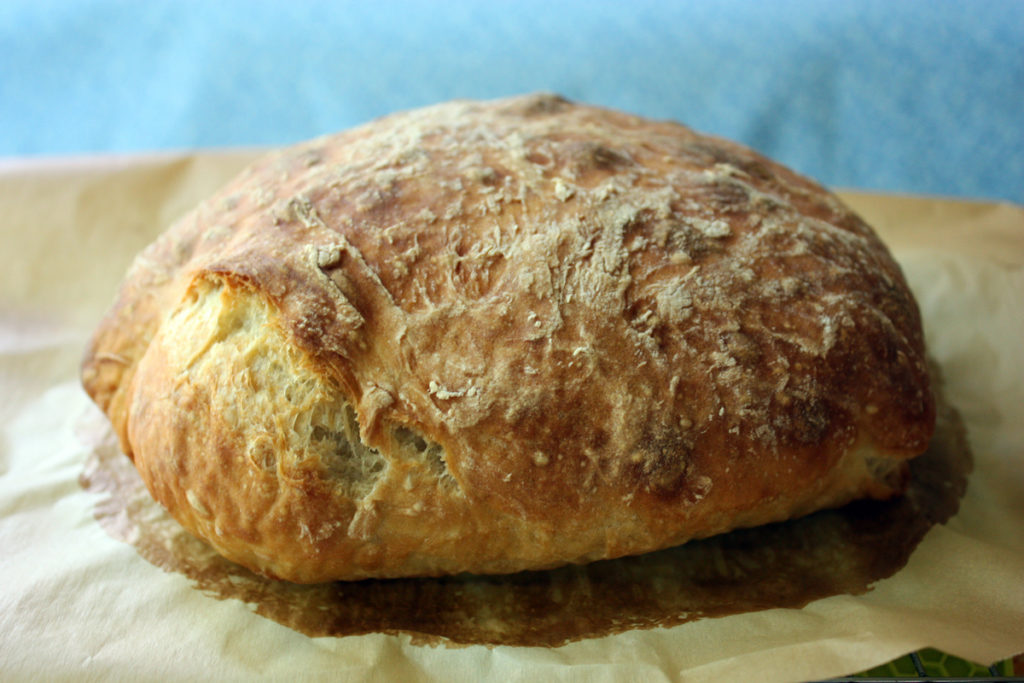
Covid Home Sanity: Issue #2: Simple Bread Making without Fuss!
Contents
Simple Bread Making without Fuss… or a Fancy Kitchen, for Kids and Grownups Together
Hi all!
Most of you know me as a writer, but I’m also an equine (horse) veterinarian. After an injury, I thought I’d never practice again, so I went back to university and completed a Graduate Diploma to teach secondary biology and chemistry.
I’m now back practicing veterinary medicine again, but with the onset of COVID-19 home isolation or quarantine, or School Time Out, I wanted to help as many of you as possible to enjoy the extra time you get to spend with your families.
I’ll be posting several times each week on my Lizzi Tremayne website with activities for kids (little and big) and grownups (mostly recipes) during our worldwide time-out. This widespread home isolation hasn’t happened before in the memory of most of the world’s population, so it’s an “open book”! I encourage you to use this time as special time with your families! If you were here with me, I could find fun things to do working around my little farm in New Zealand, but since you’re not, I’ll have to share some activities and a bit of what I’m doing on my farm and in my home during the coming weeks, instead. If you follow my blog, you’ll be emailed when a new post goes up!
I hope you’ll join me.
xx
Lizz
Simple Bread Making without Fuss
So you haven’t made your own bread before? No bread maker? No bread pans? No Dutch/Camp Oven?
With Coronavirus about, getting fresh bread… or any bread, for that matter, may be a challenge.
FEAR NOT!
Here’s the recipe for you! YOU AND YOURS CAN DO IT
Makes: One loaf

Ingredients:
- 390 g (approx. 3 cups) all purpose or bread flour

There are dried and cake yeast, but mostly find the dry in stores. - 1/4 teaspoon yeast (active dry or instant)
- 1 teaspoon salt
- 354 mL (1 1/2 cups) hot tap water, not boiling out of the jug– up to 54°C (130° F)
- (about 2-3 Tablespoons extra flour for shaping)
Tools:
- Large bowl and plastic wrap, or lidded bucket, or lidded container (big click-clack or Tupperware-like). Something to keep cold drafts out and moisture in.
- Measuring cup (if you don’t have one, use a cup you do have that’s about the right size and use it for all of your measurements. You don’t need a scale for this one.)
- Measuring spoons (or use a regular teaspoon and estimate. This is not rocket science)
- A clean bench to work on. (Yes, you can clean it, kids!)
- Baking Paper
- Baking sheet
- Oven: Fan forced is nice but not necessary.
- Muffin tins or a baking pan that holds water to make steam inside your oven
- Hot water (ideally from your hot water jug/kettle) for the steam-pan setup
- Scraper: nice to have but not necessary
- Baking scraper, or use a spatula if you don’t have one. You can make one from an ice cream container or something slightly thicker. I’ll put in a photo.
Instructions:
Measure and mix flour, yeast and salt in your bowl or container. Add water while stirring (a scraper is nice here) and stir till it’s well-mixed.
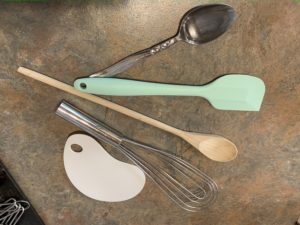
Cover with plastic wrap or the lid (see Supplies) and stand in warmish area of the room for three hours.
The dough will become puffy and dotted with bubbles. Tip it out of the container onto a well-floured surface and sprinkle dough with a little flour.
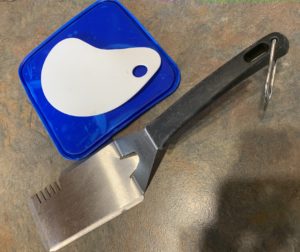
Use your scraper to fold the dough over 10-12 times (the kids love this part!) and then shape into a rough ball.
Place baking paper onto a baking sheet and cover with a towel or the upside-down bowl and let rise on the bench for 35 minutes.
While that’s sitting, put your muffin tins or baking pan into the oven (leaving room for your bread on its baking sheet!). I put it on the bottom of my oven. This makes steam, which makes for chewy, yummy crusts. (commercial bread ovens inject stem into the oven! My dream!)
Preheat oven to 232°C (450° F).
After bread has been rising for its 35 minutes, it should be a bit puffed up. Place the bread on its baking tray (with the baking paper) into the oven.
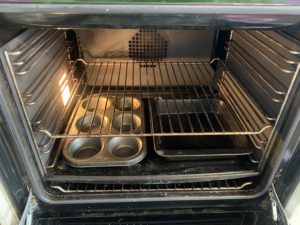
If you’re not a grownup, get permission and help from your caregiver/parent to do the next step, as you could be badly burned if the hot water spills.
CAREFULLY pour hot tap water or boiling water from the jug into each of the the muffin tin hollows or the baking pan to make steam for your bread. (THIS IS NOT the bread baking sheet!)
Immediately close the oven door–you want to keep that heat in! It makes a big difference to the final rising of the bread.
Bake for 30 minutes.
For a crispier, darker crust, remove the baking tray with the bread from the oven and place the bread on its baking paper back into the oven without the baking tray, straight on the oven rack. If you have a gas oven, ensure the paper is not near the back of the oven, or where flames come out.
If you want to make the bread overnight, use cool water instead of hot tap water and rest dough overnight on the bench top for 8-24 hours, then proceed as per directions.
Simple Bread Goes Fancy
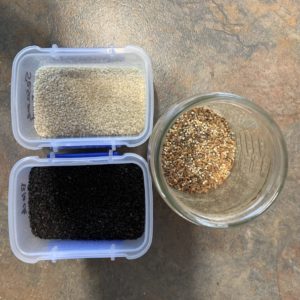
After you’ve made this a few times, you can play with the recipe. Try seeds? Cooked grains? Cooked rice? Uncooked oats? Other types of flour? Remember if you use all whole wheat or other hearty flour, it will become a rock. Fine if you like rock bread, but if not, play with varying ratios of white to heavier flours. If you mix in a little sourdough culture when mixing your dough and leaving it to set overnight, it’ll be sourdough!
THE SCIENCE BEHIND BREAD MAKING
You thought you were going to get off easy after yesterday’s chemical reactions, eh?
Not so fast, bucko!
To those of you missing out on school, here’s a bit of biology and chemistry at once, and you get to eat the results (Apologies if you’re GF, but if you can be patient, I’ll be posting a recipe just for you soon!). Doesn’t get any better than that!
Okay:
In its most basic form, flour is made up mostly of carbohydrates, which are multiple sugar units stuck together. Different types of sugar have different structures, but I won’t torture you with that today. Anyway, in the absence of oxygen (reactions in the absence of oxygen are called anaerobic reactions, an=not) live yeast organisms breaks down the carbohydrate structures of your flour and other added sugars to alcohol and carbon dioxide in a process called fermentation. Remember carbon dioxide? that’s CO2 to you guys, from yesterday’s post about volcanos? The alcohol evaporates in the oven, forming its own gas bubbles, further contributing to bread rise.
Here are today’s questions to answer below:
1- What do you think all that CO2 and alcohol that’s generated by the yeast will do to your bread dough?
2- What did CO2 do to your liquid in the volcano?
3- If we used a flour that was more complex, or larger-grained, how do you think that would affect the rising of your bread? Hint: whole grains are harder to break down… how would this affect rates of reaction?
4- If you use larger chunks of grain (vs finely ground grain), how are rates of reaction to create CO2 affected and why does this happen? This is a NZ Level 2 question… you’ll see this again, might as well learn it now! 🙂
I found two very cool websites that go into these topics and how they affect the bread you make:
Remember to post piccies of your bread or of your family or bubble-mates making it! PLEASE???
PLEASE SHARE, ALL! THE MORE PEOPLE WE KEEP FROM GOING STIR-CRAZY BY LEARNING NEW SKILLS TOGETHER, THE BETTER!
I adapted this recipe for the Kiwi kitchen from Jenny Can Cook’s website, with thanks!
Check out Jenny’s page for more scrumptious and simple bread recipes and videos!
Have fun, all, and LET ME KNOW how you went in the comments below! I’m not sure if can post images, but I’ll work on it. If I can’t, you can PM me on Facebook and send your photos to me there, I can post them on here. Unless I find out an easier way!
xx
Lizzi

Covid Home Sanity (for Kids and Everyone Else): Issue #1 Volcanos!
Contents
Home Sanity 1
Hi all!
Most of you know me as a writer, but I’m also an equine (horse) veterinarian. After an injury, I thought I’d never practice again, so I went back to university and completed a Graduate Diploma to teach secondary biology and chemistry.
I’m now back practicing veterinary medicine again, but with the onset of COVID-19 home isolation or quarantine, or School Time Out, I wanted to help as many of you as possible to enjoy the extra time you get to spend with your families.
I’ll be posting several times each week on my Lizzi Tremayne website with activities for kids (little and big) and grownups (mostly recipes) during our worldwide time-out. This widespread home isolation hasn’t happened before in the memory of most of the world’s population, so it’s an “open book”! I encourage you to use this time as special time with your families! If you were here with me, I could find fun things to do working around my little farm in New Zealand, but since you’re not, I’ll have to share some activities and a bit of what I’m doing on my farm and in my home during the coming weeks, instead.
I hope you’ll join me.
xx
Lizzi
Explosive Volcanos, Anyone? A fun volcano investigation.
You’ll need:

10 ml dishwashing liquid detergent
100 ml cold water
400 ml white vinegar
Food colouring, (works without it, but you may use it if it’s okay with your caretakers–and use this only where the colour won’t be a problem!)
½ cup baking soda, topped up with water to the top of the cup and mixed to a slurry
Empty, clean soda drink bottle, 2 litre size
Measuring spoon (1 tsp=5 ml, 2 tsp=10 ml) and funnel to fit into drink bottle
Spoon and cup to mix the soda and water
How to make that volcano!
Do this investigation OUTSIDE! It’s messy!
Mix vinegar, water, dishwashing liquid and 2-3 drops of food colouring in the empty soda bottle.
Mix the baking soda and water with a spoon in the cup until it’s mixed into a liquid.
The fun step!
Carefully but quickly pour the baking soda/water slurry through the funnel into the drink bottle and jump back to see the reaction!
What happens?
The Science, or how this happens!
When vinegar and baking soda are mixed in water, a clear gas (therefore invisible to you) called carbon dioxide, or CO2, is formed. We commonly know CO2 as the bubbles in our “carbonated” drinks– what we Kiwis call “lemonade”, “soda”, or “bubbly drinks”!
As the CO2 gas is formed, it wants to expand. Since there’s only a limited amount of space in the bottle, it has to blast out the top! There’s your volcano!
Ever shaken up a bottle of soda then opened it? What happens? Those gas molecules get excited and have to blast out the small opening just like your volcano did!
The more complete reaction is:
NaHCO3 + HC2H3O2 Þ H2O + CO2Ý + NaC2H3O2
Or: NaHCO3 (sodium bicarbonate or baking soda) + HC2H3O2 (vinegar or acetic acid) reacts to form H2O (water) + CO2 Ý (carbon dioxide) + NaC2H3O2 (sodium acetate).
If you want to understand it better, have a look at this chart explaining the “chemical reaction”:
|
Common name |
Baking soda and water |
+ |
Vinegar |
React to form |
Carbon Dioxide |
+ |
Water |
+ |
Sodium acetate |
|
|
|
|
|
|
|
|
|
|
|
|
Chemical name |
Sodium bicarbonate and water |
+ |
Acetic acid |
Þ |
Carbon dioxide |
+ |
Water |
+ |
Sodium acetate |
|
Chemical formula |
NaHCO3 (aq=aqueous) |
+ |
HC2H3O2 (aq) |
Þ |
CO2 (g=gas) |
+ |
H2O (l=liquid) |
+ |
NaC2H3O2 (aq) |
|
What you see |
White powder which makes a slurry in water |
+ |
Clear liquid |
Þ |
Bubbles! |
+ |
Clear liquid |
+ |
Invisible when mixed with water at this concentration. |
Home Sanity Questions for You!
1- Why do you think we used the dishwashing liquid in this investigation? It’s not in the written chemical reaction equation!
2- Why do you think we used the food colouring? It’s not in the written chemical reaction either!
3- What happened when you did the investigation? Was it cool?
Go ahead and comment in the comments below! I’d love to hear from you!
Here are a few other similar investigations if you want to try them for fun!
https://www.youtube.com/watch?v=nRMyMIy7U6E
Here’s another volcano that doesn’t use as much baking soda and vinegar and might be easier and more fun for little ones!
https://www.sublimescience.com/free-science-experiments/how-to-make-a-volcano/
Here’s a great one to make out of salt dough. A lot more involved but looks a lot of fun!
https://teachbesideme.com/how-to-make-a-volcano-science-project/
If you’re studying chemistry at school, this video will give you more information on how the reaction itself occurs:
https://www.youtube.com/watch?v=StagiUUObUw
Share these Home Sanity posts around with your friends and remember to comment below!
Looking forward to hearing from you!
Stay well!
xx
Lizzi
It’s Read an Ebook Week!
Hi all! Climbing out from under my writing rock to let you know it’s Read an Ebook Week from March 2nd-8th!
They’re even for kids, see? Kobo Buy One Get One Free
Kobo Buy One Get One Free
What better way to celebrate Read and Ebook Week than with Kobo’s March Buy 1 Get 1 Free special on Romantic Suspense Ebooks?
You’ll find all of my Long Trails series books in here, at half off!
Click here for A Long Trail Rolling 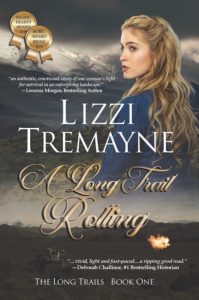
and
Click here for The Hills of Gold Unchanging and A Sea of Green Unfolding
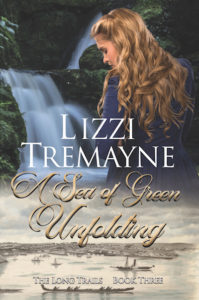
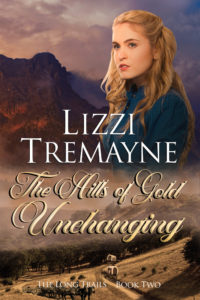
Contents
Kobo’s Overall Thriller and Suspense Buy One Get One Free book pages for Read an Ebook Week are here, by country:

I hope you’re all having a great summer or winter, depending upon where you live!
High Summer in NZ
It’s gorgeous here, though a … bit… dry. At least it let me get my hay in, DRY!
Here are some pics of NZ in a “big dry”, which is highly unusual for my area in the North Island along the Kaimais, near the base of the Coromandel Ranges.


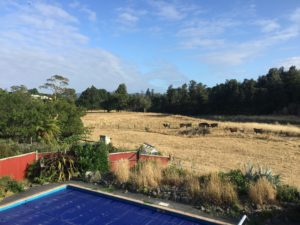
Some amazing sunsets too!
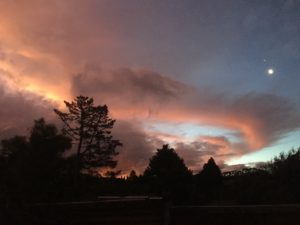
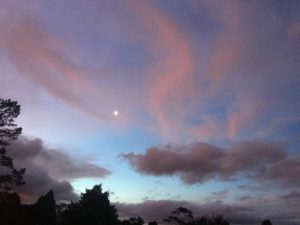
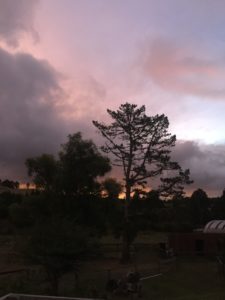
What is your place looking like about now?
Comment below with some pics of what it’s like where you are right now!
Tell me about it!
Enjoy Read and Ebook Week! Tweet about it! #ReadanEbookWeek!
xx
Lizzi
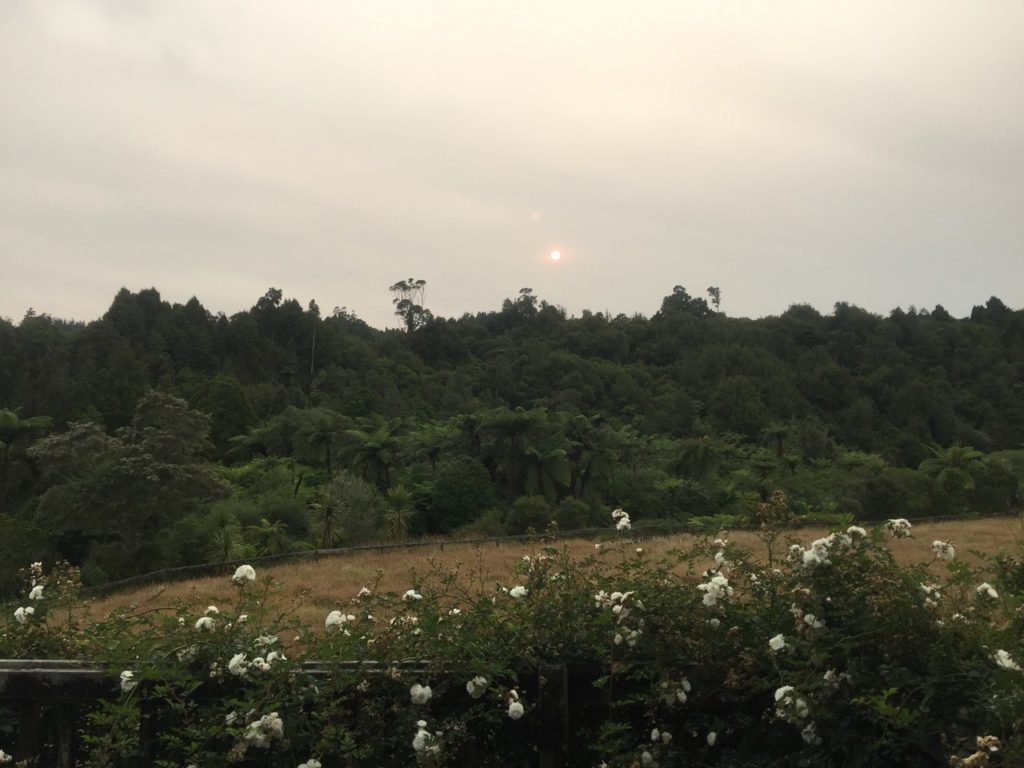
Will The Year Without a Summer Happen Again?
Contents
The Year Without a Summer?
All of our thoughts from New Zealand are with our Australian cousins in this time of the fires which are devastating their already hot and dry lands. Climate change there has had disastrous consequences which I needn’t repeat here.
See more here: Australian fires on BBC
We’re seeing the atmospheric results of it in New Zealand already.
In Waihi, in the North Island of New Zealand, I awoke on the first day of January to see this out my bedroom window… No filters, no colours. Just my iPhone and the strangest-looking sun I’d ever seen… I could look straight at this glowing pink ball.
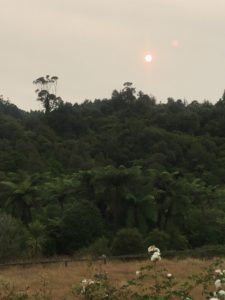
My friend Chantelle Gerrard (Costume designer and photographer extraordinaire: Find her here!) shot some exquisite images of the colourful sky as the orange-pink haze moves north from Waihi to Auckland, New Zealand.
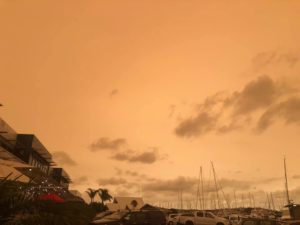
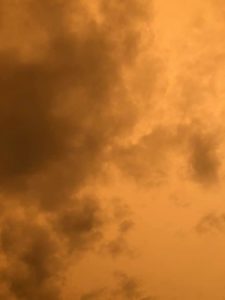
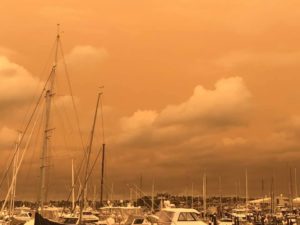
WHAT WAS that?
My first thought, upon seeing that pink sun was of “The Year Without a Summer”, which had come up in my research for the upcoming second book in my Somewhere series. (Yes, I know the first book in the series isn’t out yet… nearly done, then it goes to St. Martin’s Press… so who knows when it may be out, sorry!).
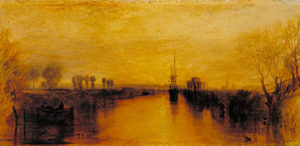
The Year Without a Summer was immortalized by such painters as JMW Turner, featuring glowing orangey-pink skies over England in spring and summer of 1816. Colder than normal temperatures during the summer caused widespread crop failure and unseasonal snows (June!) throughout the Northern Hemisphere and continuing shockingly cold weather over the next few years.
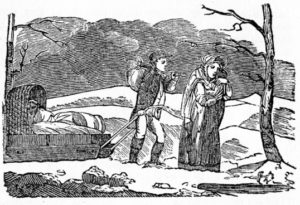
Those in the New England (Eastern United States) experienced lake and river ice and otherwise-freezing temperatures from May through August of 1815. Severe weather from excessively high to extremely low meant widespread crop failure and hunger. Read more here
People from Europe, England, Wales saw heavy rains and low temperatures, which also caused failed harvests and famine. Ireland in particular experienced severe famine and typhus. All this was on top of the stress encountered in the recovery from the Napoleonic Wars.
Demonstrations, riots, and arson followed the disaster in England, France, Switzerland and other places in Europe, especially as no one knew the cause of this worst famine in 19th century Europe. In China, the cold and severe floods destroyed crops and animals and people via Typhus, while In India, cholera spread in the torrential rains from delayed summer monsoons, as far as Moscow.
The unseasonal prolonged darkness, cold, and wet may have even been responsible for artistic, and dark, masterpieces. Frankenstein was created, opium became an alternative crop to the soggy rice in China, and many other items of interest! Check them out here!
Just how did this year without a summer come about?
The centuries-long “Little Ice Age” had already been causing distress in Europe for some time. They may not have known it then, but it was likely due to or exacerbated by several large eruptions around this time.
Read more about The Year Without a Summer here!

These eruptions occurred between 1808 and 1814 from somewhere in the Pacific Ocean, on St. Vincent (Caribbean), Dutch East Indies, Japan, and the Philippines, but a massive eruption at Mt Tamboro probably made the whole situation that much worse. It’s estimated that the Mt Tamboro eruption put at least 1000 cubic kilometres of particulate material (dust and ash) and sulfur dioxide into the atmosphere… certainly enough to block the warmth from the sun for quite some time, causing the earth’s average temperatures to drop by an estimated 1-2 degrees in the Northern Hemisphere.
So, will we see a repeat of history from the atmospheric ash of the Australian bush fires?
It remains to be seen.
Fimbul Winters? Real or Myth?
And what would happen if there were many years of it? Or, as this article suggests, it were repeated and people were poorly prepared, as the inhabitants of Norway and Sweden were in 500-odd AD? Were the mythical Fimbul Winters real? Read about it here!
Another Effect of Climate change: Heat Blob?
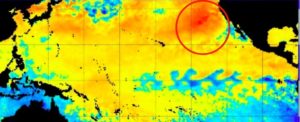
Probably unrelated to the bush fires, but nonetheless part of the climate change we’re seeing, is a massive “heat blob” about a million square km (about the size of Texas) in the Pacific Ocean to the east of New Zealand. It’s about five degrees Celsius (approx. 9 degrees F) hotter than the surrounding ocean. They’re saying it’s from reduction of trade winds, which have a cooling effect. The disruption of aquatic life from a temperature change of this magnitude is unthinkable.
Living organisms are designed to live within a narrow temperature range. As a veterinarian, I use temperature alteration ever day to help destroy microorganisms that cause disease. E.g.: to kill bacteria in a wound, I recommend people hot-pack the area for at least 20 minutes, ideally three times per day because I know that a 1degree F temperature raise multiplies the bacterial kill rate by about ten times.
So I have a pretty good idea of what a five degree CELSIUS temperature change will make on those creatures, great and small, living in that part of the sea. It will impact not only on them, but as they’re part of our food chain, on us, as well. Thanks, Matthew Tremayne Author, for letting me know about this!
Here’s a video on the hot patch in the Pacific here
So… what to do?
At this point, do our best to minimize our impact on the earth: decrease usage of fossil fuels, plastics/plastic production, use less, waste less… and again, WASTE LESS... the best we can…
For 2020 and beyond.
Thanks for reading.
I’d love to hear your comments to my rambling!
If you need some holiday reading, pick up A Long Trail Rolling right now, it’s free this week!
Xx
Lizzi

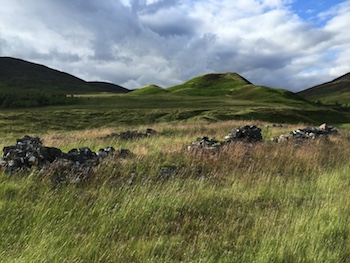
Names, Please, Readers?
Hello my lovely reader!
I wondered if you could help me?
I need to know your favourite historical Scottish names… to use in my upcoming Historical Fiction novel, nay, a series, starting in the time of the Highland Clearances in 1815 and going through the 1860s.
I need a heroine name and a hero name. 🙂
Here are their (borrowed from the actors) images.
My heroine:

My hero:

You choose!
If I choose your names, you’ll get a copy of the book once it’s published. I might not be able to put your name in acknowledgements, as this one may be published by a BIG 7 Publisher, but I’ll try! Next post!
Fair enough?
In the comments below, please leave your chosen names and your email (type out your email with extra spaces and spell out the word dot so it doesn’t get picked up by bots so easily… e.g.: write lizzi@hyperspace.com as lizzi@hyperspace dot com)
Happy choosing!

True West 2016 Best Western Romance!
Contents
True West Magazine
True West Senior Editor Stuart Rosebrook PhD reviewed A Long Trail Rolling a few years ago and I was searching for it to go into an application for the NZ Book Council. Couldn’t find it, though, could I? But boy, was I excited to find this! Must be a bit slow–it was from 2016!
Even better, Dr. Rosebrook wants to see the rest of the books! 🙂
From Dr. Rosebrook:
Best Western Romance
A Long Trail Rolling by Lizzy Tremayne (Blue Mist Publishing).
Romance novels generate well over a billion dollars in book sales worldwide. According to Loren Estleman in Writing the Popular Novel, budding authors wanting to profit from writing should consider Romance. It’s one of the five most profitable genres. (Horror, mystery, science fiction and Westerns round out the five.). If California-born and raised, New Zealand-based veterinarian and author Lizzy Tremayne continues writing Western romances like A Long Trail Rolling, she will not only be successful, but will help perpetuate romance in Westerns as much as Zane Grey did a century ago.
Best of the Rest
1. Against the Tide by Kat Martin (Zebra/Kensington).
2. Now and Forever (“Wild at Heart” series, book two) by Mary Connealy (Bethany House).
3. Hearth Stone by Lois Greiman (Kensington).
4. Bride at Last by Melissa Jagears (Bethany House).
5. A Worthy Pursuit by Karen Witemeyer (Bethany House).
If you want to see the whole article, it’ s here:
https://truewestmagazine.com/best-of-the-west-2016-western-books/
Haven’t yet read A Long Trail Rolling? Find it here!
Working on getting Tatiana finished this month. (or Tatiana I, anyway! )
What are you up to? Leave me a message in the comments and let me know!
Take care,
xx
Lizzi
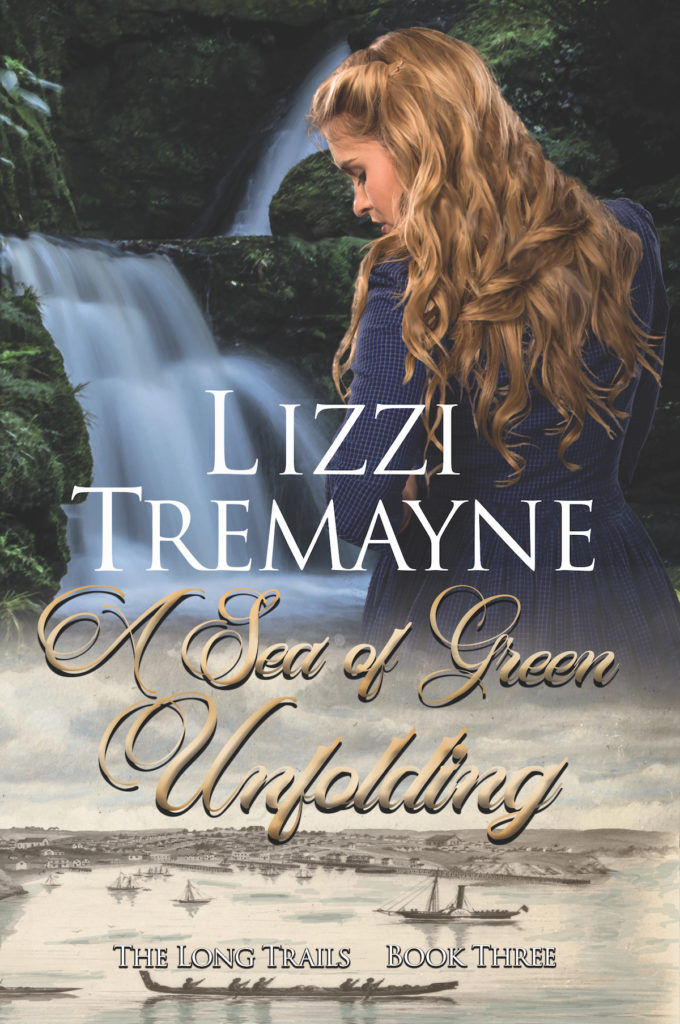
An Historically Pleasant Surprise!
When you write historical fiction and are invited by a group of historians (both Pākeha and Māori) who research and live (and whose ancestors lived…) in the exact area you’ve written about in one of your historical novels… well, you might forgive me for being a bit nervous. Perhaps even historically terrified!
It was well received, but one never knows if it’s politeness or not… but after the email I just received, well… it makes it all worth it.
Not meaning to skyte, as we say in New Zealand, but I’m going to. Here it is…
“Lizzi Tremayne was guest speaker at our monthly meeting in July 2017.
We chose Lizzi as one of our members had recently read her series of books, the third of which was Sea of Green Unfolding.
That novel followed the journey of Aleksandra and Xavier in New Zealand in 1863 at the beginning of the Waikato Wars. They travelled from California to the East Coast of the North Island where they were separated following a shipwreck. Most of the tale chronicles the solo trek of Aleksandra from Coromandel to Auckland via the Hauraki swamps and North Waikato.
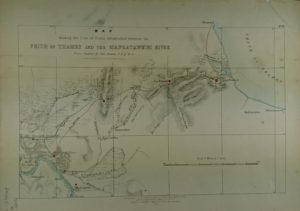
Near Miranda (Pūkorokoro) she came across the newly built defensive Redoubt and was then escorted by soldiers through the district to Auckland.
The Mangatangi Historical Group has its base in the area through which her trek was made. As such we were very interested in how Lizzi recorded the history of our patch, 150 years later.
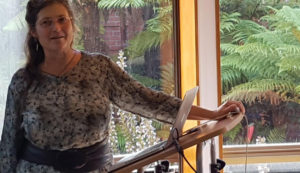 Lizzi has a fascinating writing style as she wraps verifiable history into an adventure novel.
Lizzi has a fascinating writing style as she wraps verifiable history into an adventure novel.
She writes with accuracy and a rare talent for describing events and places. A fourth book is awaited with interest.
As a public speaker Lizzi rivals her talent as a writer. She has an engaging personality and an enthusiasm for describing her life and works.
I would strongly recommend her as a guest speaker to any organisation with an interest in history. You won’t be disappointed.”
M. Reid
Mangatangi Historical Group
New Zealand
Wow. Some days it’s just so worth opening the inbox.
This week I requested (biting my lip) a one- or two-liner regarding my talks from a few of the historical societies and libraries at which I’ve spoken… and this came out of that request.
Have a wonderful day!
xx
Lizzi Tremayne
BookBub: Have You Seen it Yet?
BookBub: It’s something I’d never heard of, but it’s great for letting you know about deals on books in categories YOU choose.
It’s also a great place for authors to get their books out to people all over the world who are interested in the sort of books they write.
This post is to let you know about a promotion I’m involved with that lets you join me and the other authors you’d like to join on BookBub (for free, of course)
SO what’s it about?
I’ve teamed up with 30 fantastic authors to give away a huge collection of Historical Romances to 2 lucky winners, PLUS a brand new eReader to the Grand Prize winner!
You can win my novel A LONG TRAIL ROLLING, plus books from authors like Cynthia Woolf, Glynnis Campbell, Emmanuelle de Maupassant, and more — just by following me and other great Historical Romance authors on BookBub!
You can enter the giveaway by clicking here 👉 https://booksweeps.com/book-giveaway/historical-romance-bookbub-may-2019/
Good luck! I hope you enjoy Bookbub!
Take care,
Lizzi
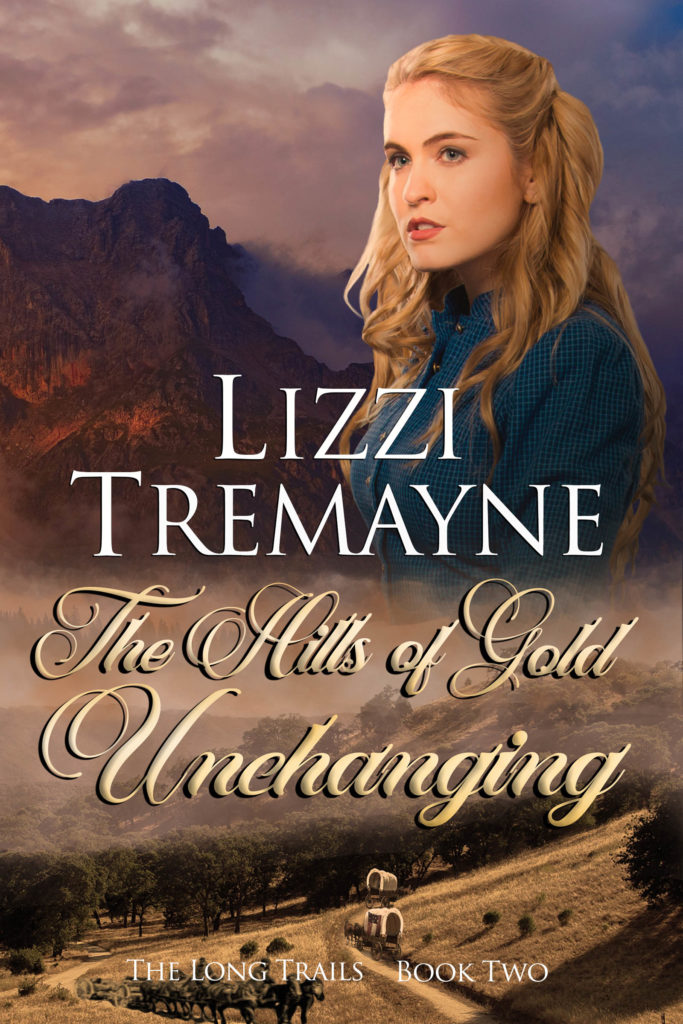
#SixSentenceSunday: The Hills of Gold Unchanging Ch 6
The Hills of Gold Unchanging. Book Two in The Long Trails series of unpretentious, eminently readable Historical Fiction by horse vet-author Lizzi Tremayne is my #SixSentenceSunday for the week.
Contents
Want to read an excerpt?
Here’s the first bit of Chapter Six from 1860 Utah:

“Oh, no.” Aleksandra froze, and Rogan danced sideways beneath her, ears back.
“What?” Desiree said, from her seat on the wagon box.
“I can’t find my surgical kit.” She made her body relax, and the colt sighed and walked on. “I took it out of my saddlebags last night to sharpen the scalpel blades…and left it behind.”

Want to know what happens next?
Find it here
 Book Two in The Long Trail Series: The Hills of Gold Unchanging
Book Two in The Long Trail Series: The Hills of Gold Unchanging
No one will stand in their way and live.
As the Civil War rages, secessionists menace California.
Aleksandra and Xavier are trying to get back home—through the oncoming Civil War, the mining camps of 1860’s Nevada and California, and the Sacramento floods—to Xavier’s Californio Rancho de las Pulgas. Embroiled in the Confederate’s fight to drag the new state from the Union and make it their own, can Aleks and Xavier survive?
The secessionists mean business.
See the rest of the series here
Thanks for coming by #SixSentenceSunday! Stay awhile and take a look around the site!
See you next week!
xx
Lizzi Tremayne
#SixSentenceSunday
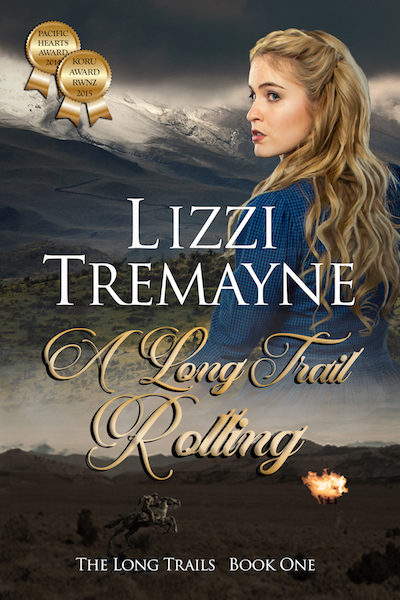
#SixSentenceSunday: A Long Trail Rolling Ch 6
A Long Trail Rolling is Book One of The Long Trails series of unpretentious, eminently readable Historical Fiction by horse vet-author Lizzi Tremayne. The beginning of Chapter 6 is my #SixSentenceSunday offering for today!
Contents
Would you like an excerpt? Here you go: From 1860 Utah…

The body held her fast, whispering roughly for her to keep quiet, while she was bustled into a darkened gap a few feet away. Aleksandra heard a bolt slide home, then her heart froze in her chest at the sound of shouting men, squealing saloon doors and heavy boots at a run outside the door. As they slowly faded into the distance, she took a deep breath and looked around her in the darkness.
The grate of a stove scraped open, showing a glowing bed of coals. Its light revealed her savior as the brunette from the saloon.
The woman set a twig atop the coals and lit the lamp.

Want to know what happens next? Find it here:
Book One in the series.
A dangerous job.
Is it a convenient escape route… or a death trap?
Aleksandra flees through 1860s Utah disguised as a Pony Express rider, trying to keep her father’s killer from discovering their family secret.
Xavier, runaway heir to a Californio rancho, usually keeps the world at arms-length, but it doesn’t take long to discover his new rider-recruit is a girl—one he wouldn’t mind letting get close.
The cards are stacking up against them. Can they learn to trust in time to escape the Indians on the warpath, evade the killer, and win through to safety?
See the rest of the series here
Thanks for coming by #SixSentenceSunday! Stay awhile and take a look around the site!
See you next week!
xx
Lizzi Tremayne
#SixSentenceSunday
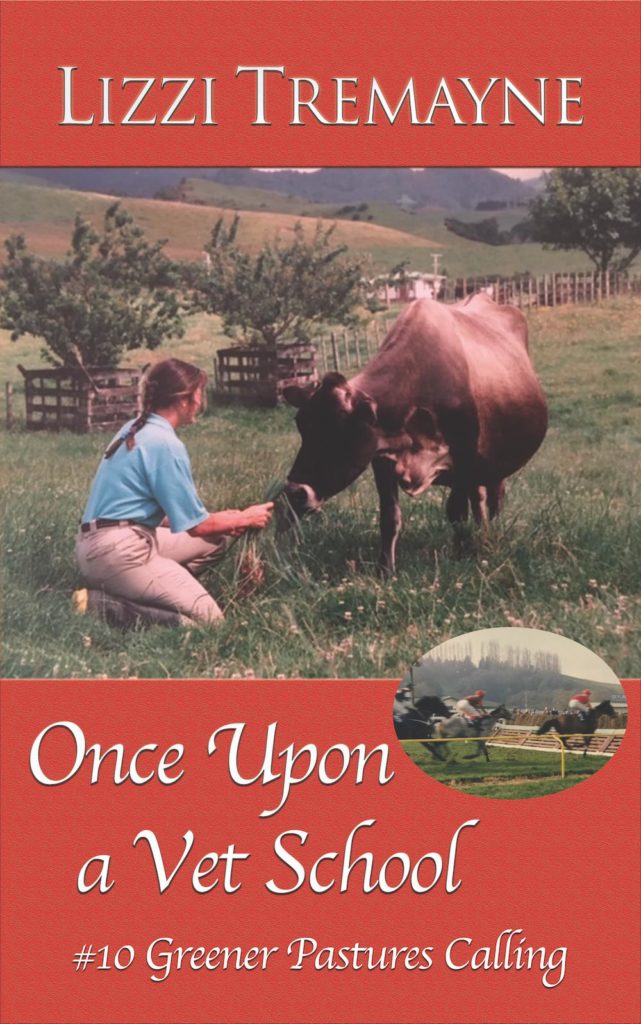
#SixSentenceSunday: OAVS #10: Greener Pastures Calling Ch 2
Greener Pastures Calling, Book Ten of the Once Upon a Vet School series of unpretentious, eminently readable Contemporary Women’s Veterinary Fiction/Romance by horse vet-author Lizzi Tremayne is my #SixSentenceSunday for the week.
Want to read an excerpt from the beginning of Chapter Two?
Setting is
September 1992, Te Awamutu, New Zealand
Here you go!

The show was good, hysterical even, but my date, Marcus, got progressively more drunk as the evening went on. Obnoxiously drunk, to boot. I was trying to figure out how to get the keys for his shiny black Holden out of his hand and into mine, because as luck would have it, Moira had to cancel to care for her injured sister’s children. How could I complain about that?
So here I was, wondering what to do next, wondering at my brilliance, and feeling trapped. The concept of a bus way out here was a joke, and a taxi… I didn’t make enough money for that, if one even existed in this little backwater town.
Want to know what happens next? Find it here!
 The Story:
The Story:
A new country, a great job, and a good Kiwi bloke.
Life couldn’t be better.
Until it gets worse.
Newly emigrated to New Zealand, equine veterinarian Lena wants a “good Kiwi bloke”, but they’re elusive as their nocturnal namesake. Her history with men is not, shall we say, salubrious.
Nigel’s avoiding females, unless they’re cows, horses, or his mother. After his first marriage, he won’t be responsible for anyone else’s life. Ever again.
Sparks fly when they meet, but not the first time, over the dirty instruments in a filthy cowshed. They’re made for each other… but then Nigel remembers where he first saw her. And then the questions start.
BOOK TEN IN THE ONCE UPON A VET SCHOOL SERIES
Find Greener Pastures Calling here
See the rest of the series here
Thanks for coming by #SixSentenceSunday! Stay awhile and take a look around the site!
See you next week!
xx
Lizzi Tremayne
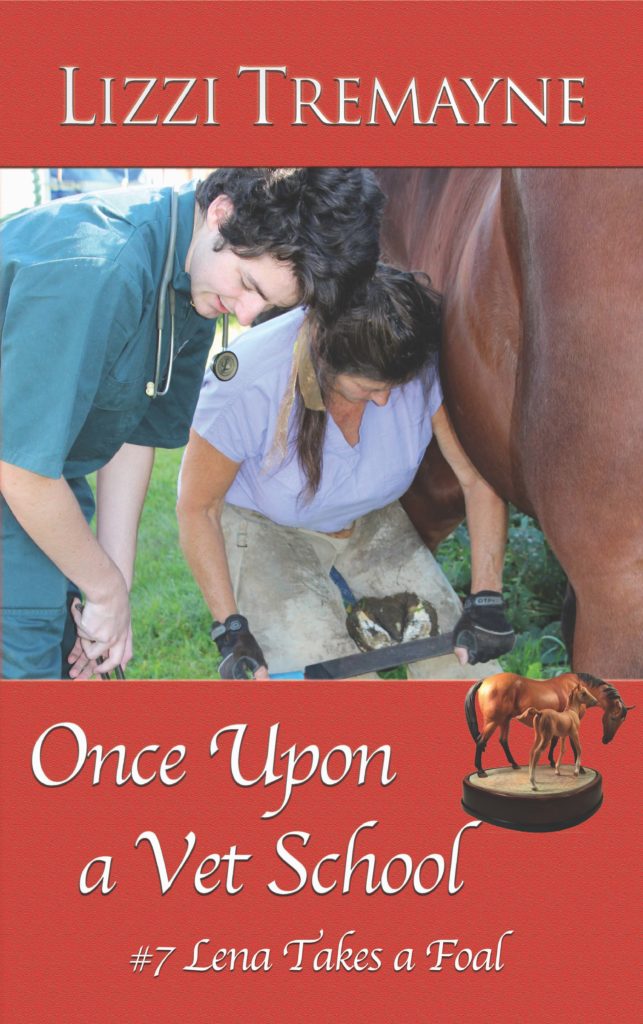
#SixSentenceSunday: OAVS #7: Lena Takes a Foal Ch 7
Lena Takes a Foal, Book Seven of the Once Upon a Vet School series of unpretentious, eminently readable Contemporary Women’s Veterinary Fiction/Romance by horse vet-author Lizzi Tremayne is my #SixSentenceSunday for the week.
Contents
Want to read an excerpt?
Here’s the first bit of Chapter Seven from 1980’s Northern California:

I called the dean’s office first thing and was given an appointment for 0730 the next morning. The secretary had apparently expected me to call.
I’m not sure how I survived that day or slept that night, but nonetheless, I was up before dawn, my head swirling. At risk was everything I’d worked so hard for, this Main Street town-humanities-girl learning sciences and somehow achieving the necessary 3.86 average, working Friday and Saturday night graveyard shifts in emergency clinics while attending university full time. No wonder I was lost when it came to human relationships. I don’t know how my married-with-children classmates did it, but they did.

Want to know what happens next? Find it here
About Lena Takes a Foal
She needs help… he needs to stay away…
Lena Scott has a problem—one that might prevent her from graduating from veterinary school.
After a messy divorce, Kit Allen returns to his first loves—horses and his old veterinary school alma mater. He excels at imparting his knowledge to students and is determined to earn a tenure track position. Becoming involved with anything but a pager—ever—isn’t in the cards. Especially a talented and beautiful student in need of his assistance.
When Lena’s horse rears over backwards and lands on her, it has to be the dashing resident, Kit, who finds her. Luckily for her, she’s sworn off relationships after her last romantic disaster. She has more important things to worry about than sea-green eyes and rugged good looks.
Besides, if there’s one thing a veterinary school faculty frowns upon, it’s a relationship between a resident and a student…
like oil and water, they just don’t mix.
See the rest of the series here
Thanks for coming by #SixSentenceSunday! Stay awhile and take a look around the site!
See you next week!
xx
Lizzi Tremayne
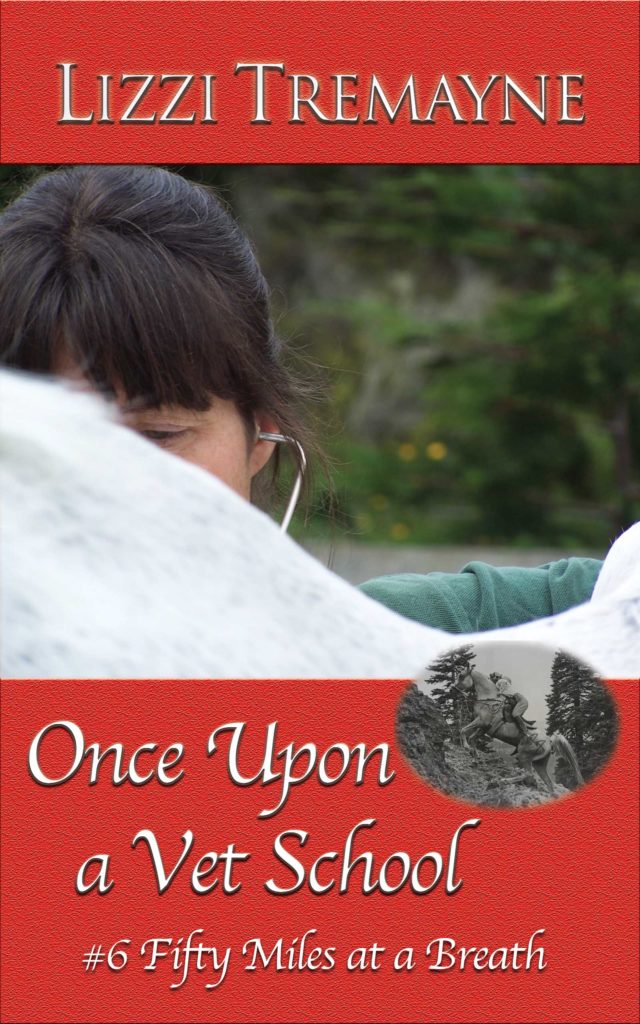
#SixSentenceSunday: OAVS #6: Fifty Miles at a Breath Ch 5
Fifty Miles at a Breath, Book Six of the Once Upon a Vet School series of Contemporary Veterinary Fiction by equine vet turned author Lizzi Tremayne, is my #SixSentenceSunday for the week.
Here’s the first bit of Chapter Five from Southern California in the 1980s:

“My professional opinion?” Dr. Latimer’s voice, as he spoke with the irate owner of the exhausted horse, was so soft as to be barely audible, but the thinly-veiled fury was unmistakable.
“Yes, what’s the matter with my horse?”
“I’m glad you asked. Plain and simple, he’s been pushed past his fitness level and you’re in very real danger of losing him, especially if we don’t pull off some heroics here. Do we have your permission to begin?”

Want to know what happens next? Find it here
Contents
 About Fifty Miles at a Breath
About Fifty Miles at a Breath
Horses bring them together. Their future looks rosy—it’s the present they can’t handle.
When equine veterinary student Lena and veteran pilot Blake fall in love, school and the past intrude. Add in a long-distance relationship, and things get just plain hard.
A grueling endurance race forces them to draw on their strengths and face their fears—together.
Find Fifty Miles at a Breath
See the rest of the series here
Thanks for coming by #SixSentenceSunday! Stay awhile and take a look around the site!
See you next week!
xx
Lizzi Tremayne
